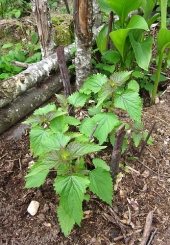I've been learning about new plants that I have no previous experience with in either my own gardening or as alternative herbal medicinals. But I find I've had a hard time finding information about the differences between the "anise hyssop" which is actually an agastache, and the true hyssopus officianalis, which seems to be of the carrot family. Most websites have not been helpful in telling me that they are in fact different, though are used similarly if not identically. They both also seem to look very similar in their growth habits.
This site (
https://growitbuildit.com/anise-hyssop-guide-agastache-foeniculum/ ) finally confirmed it for me with this statement:
Is Anise Hyssop the Same as Hyssop?
Anise Hyssop (Agastache) is not the same as Hyssop (Hyssopus). Anise Hyssop is Native to North America and a member of of the mint family, while Hyssop spp is a member of the carrot family and native to Europe. They are completely different genus and species!
But this page (
http://gardenersapprentice.com/gardeningtips/hyssop-and-agastache/ ) threw more mud in referring to the agastache as hyssop (maybe because it's considered a "common" name?) So did this site (
https://draxe.com/essential-oils/hyssop/ ).
So, fellow permies, who can clarify if there are major differences in the two species, if there are differing uses for the 2, or anything else I might want to know about what seems to be two separate species that have such intertwined and similar uses for pollinators, medicinal uses, and other uses I may not yet be aware of?









